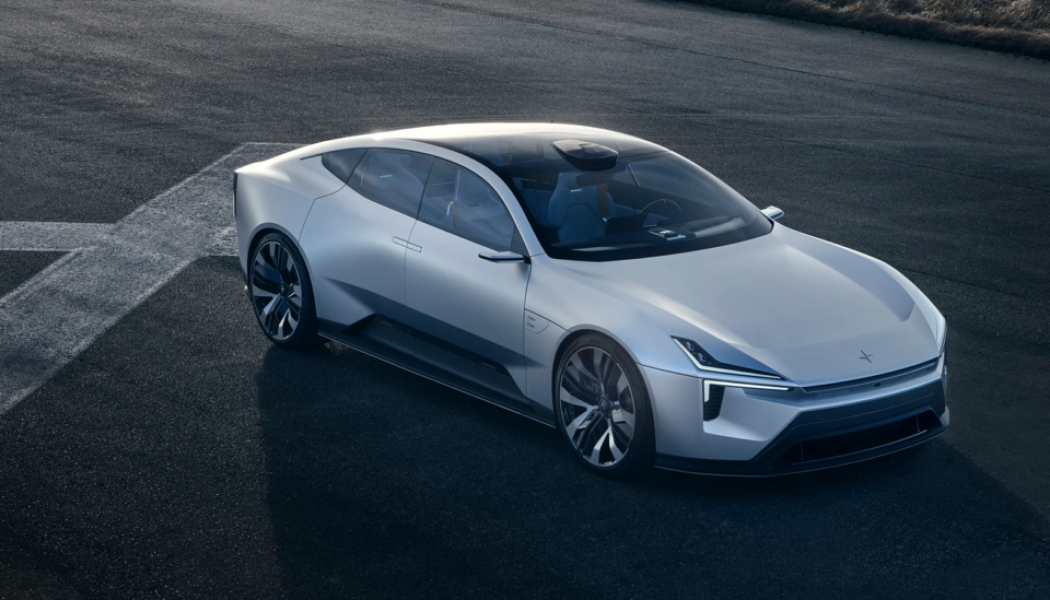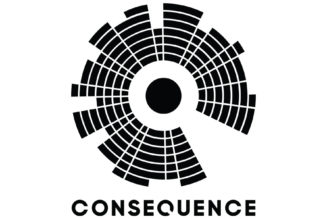It was supposed to be a flight of fancy. A vision quest, a commitment car, and a bunch of other adjectives, all of which led Polestar to go so far as to forgo calling its Precept show car a “concept.” Despite this, Polestar is now sending the well-received, low-slung electric sedan into production at a new plant in China. Expected name: Polestar 4.
Polestar, the electric performance vehicle brand jointly owned by Volvo Car Group and Zhejiang Geely Holding, is still fledging. The first offering in 2017, appropriately named the Polestar 1, was a plug-in hybrid grand touring coupe. But the brand’s mandate soon became all-electric cars only, and to that end, the 2021 Polestar 2 arrives as a battery-electric sedan that delivers 408 hp, 487-lb-ft of torque, and a targeted range of 275 miles. In short, it’s charged and ready to take on the Tesla Model 3 and Model Y.
Polestar Precept: A New Design Language
When Polestar showed the Precept in February, the brand had no intention of making it, Polestar CEO Thomas Ingenlath told MotorTrend in an interview from China ahead of the 2020 Beijing International Automotive Exhibition. “It became such a damn nice piece,” he said with a laugh. “We felt it was a design that really can excite people.”
And it did; it drew positive reviews and public clamor. That led to a “heavy look at how the hell can we produce it?” Engineers based in the United Kingdom were tapped to see how to do so, borrowing some existing engineering from the overall Geely group to keep costs in check. In the end, the decision was made to add a Precept-like car to the Polestar lineup.
Polestar Precept: From Concept to Reality
Polestar already has a reputation for creating production cars that are “damn close” to the show car, Ingenlath pointed out. While some elements, such as the Precept’s coach doors, will be replaced by conventional ones in production, much of the show car’s design has a good chance of making it to the real world, the CEO and former Volvo designer said.
That includes the glass panoramic roof that extends deep into the rear of the vehicle. There is no rear window. Instead, the driver relies on cameras to project images onto a screen. Removing the rear glass allowed designers to move the shut line of the trunk up to give it the functionality of a hatch, which creates a huge trunk opening, Ingenlath said.
Polestar 4: Made in China
Polestar will produce the production Precept in a new greenfield plant in China—the specific city has not yet been disclosed. The brand realized using an existing plant would not suffice, as the advanced electric vehicle is far different than similarly sized Volvos. The car needs “more special effort,” Ingenlath said. Polestar wants to make the lower-volume electric car in a plant with a low carbon footprint, thus supporting the creation of an entirely new plant.
The Polestar 1 is made in Chengdu, China. Polestar 2 is assembled in Luqiao, China, in a plant that is owned by Geely and operated by Volvo and dedicated to making vehicles on Volvo’s compact CMA architecture. Ingenlath would not share if the Polestar 3 will be built in China or at the company’s United States plant near Charleston, South Carolina.
As far as timing is concerned, we expect to see the Polestar 4 arrive no earlier than 2023, as the Polestar 3, an electric SUV, is due to go on sale in 2022.
Polestar 4: The Most Logical Name
A name for the production Precept has not been formally discussed yet, but Ingenlath noted the show car’s name won’t see the light of day, as he would like to maintain the brand’s numerical naming scheme. He likes being able to create a new vehicle without being beholden to replacing an existing model. “I see the beauty in not fixing cars to names. It frees you. You can always be new and open if you don’t have to replace the one before.”
The Polestar 4 will be built on the new SPA2 vehicle architecture that underpins all but the smallest Volvos. It affords room for a large battery pack under the floor and electric motors at both axles. The new car will also tap into the automotive group’s tech and electronics to provide semi-autonomous driver-assist and other safety systems that are embedded within the “Smart Zone,” which replace the formal grille at the front.
Fishnet Carpets? The Precept’s Got It
The Precept also features an interesting mix of sustainable materials. There are lightweight flax-based composite parts inside and out. The seat coverings are 3D-knitted from recycled PET bottles, old fishing nets are woven into the carpets, and recycled cork is converted into a sort of vinyl that resides on the seats’ bolsters and headrests.
Polestar hopes to bring much of this sustainability to its production cars. Ingenlath shared that recycled plastic and natural fibers are due to find their way into Polestar’s cars’ cabins.
Will Polestar add more SUVs to its lineup, though? Ingenlath thinks the Polestar 3 will be an interesting addition to the segment. The Precept, and its production counterpart, is Polestar’s way of preaching the world cannot be just about SUVs. Automakers have to be creative “so we are not just looking at each other from SUVs,” he said. “Maybe create the next big thing.”










